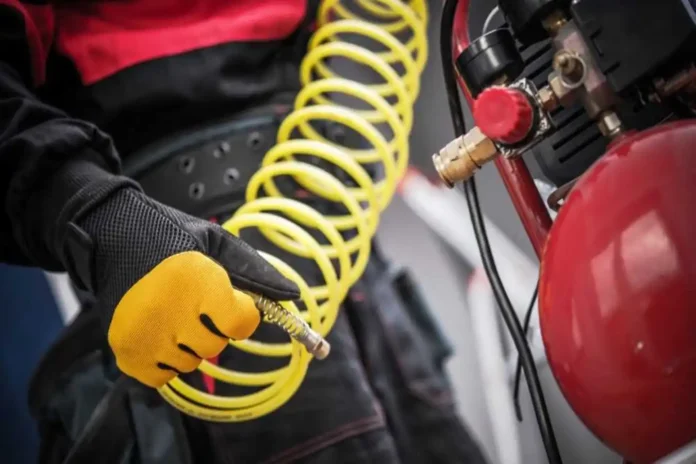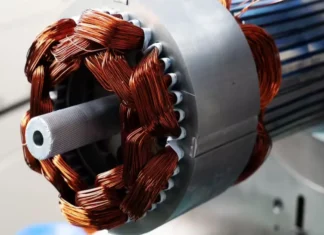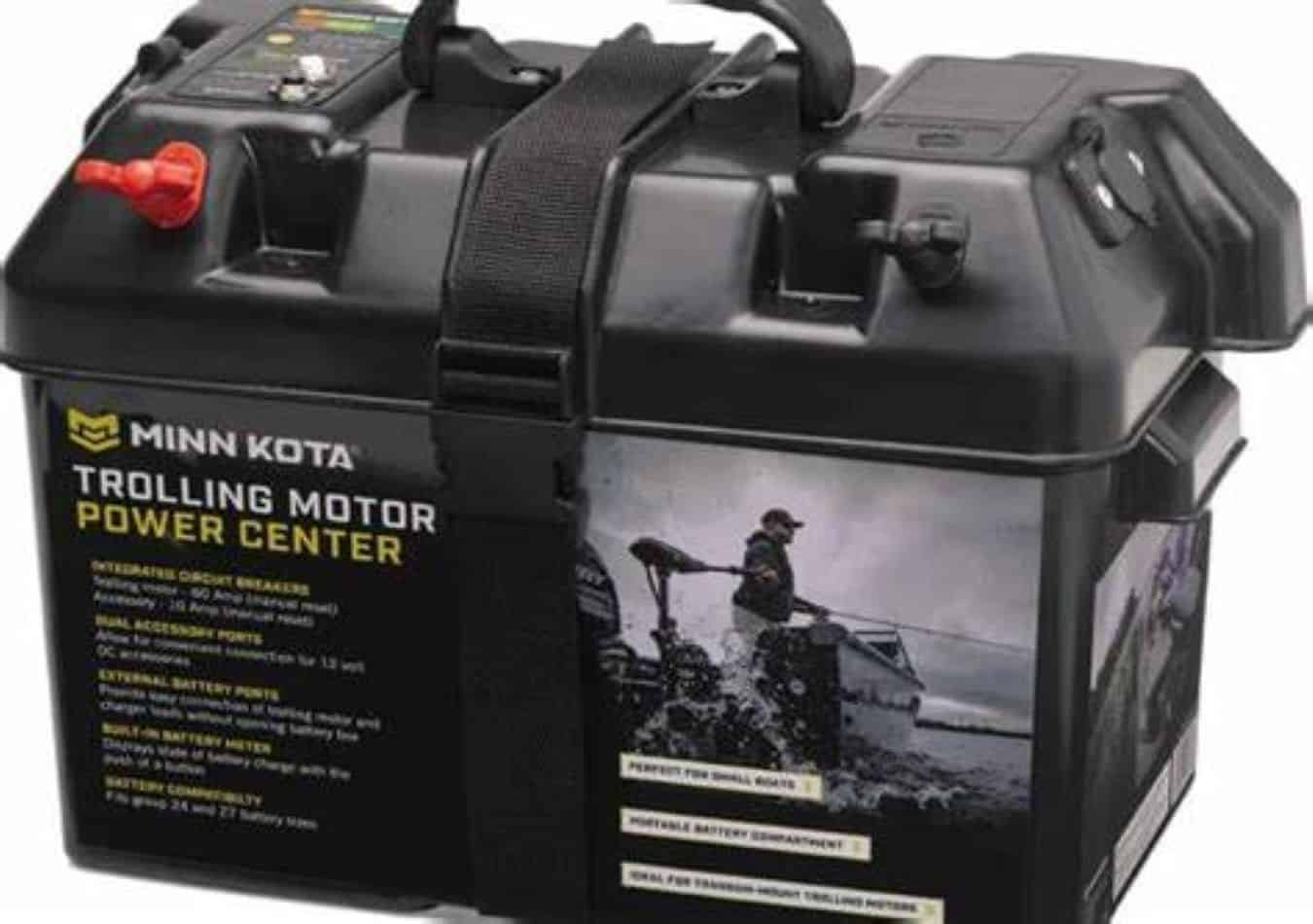In light of the possibility that your tires might deflate unexpectedly, are you concerned about using your vehicle for camping? Then, consider an air compressor.
Air compressor are incredibly versatile tools that can be used for a variety of purposes, from inflating tires to powering pneumatic tools.
Despite their usefulness, many people are intimidated by air compressors and don’t know how to use them.
This blog post aims to demystify air compressors and provide all the information you need to know to use them safely and effectively.
We’ll cover topics such as how air compressors work, the different types of compressors available, what to look for when buying an air compressor, how to maintain your compressor, and much more.
So whether you’re a DIY enthusiast or a professional contractor, read on to learn everything you need to know about air compressors and how to get the most out of them.
What is an Air Compressor?: Overview
Air compressors are essential tools used in a wide range of industries and applications. They work by converting power into potential energy stored in pressurized air.
This pressurized air can then be used to power various tools and equipment, making them versatile and efficient.
One of the most common applications of air compressors is in construction. They are used to power pneumatic tools, such as nail guns, impact wrenches, and paint sprayers.
The pressurized air provides the force needed to drive nails into wood, tighten bolts, or evenly distribute paint on surfaces.
In manufacturing and industrial settings, air compressors play a vital role in powering machinery and equipment.
They are used to operate pneumatic systems, such as conveyor belts, packaging machines, and assembly lines.
The consistent and reliable source of compressed air ensures smooth and efficient operations.
Beyond construction and manufacturing, air compressors are also widely used in the automotive industry.
They power pneumatic tools used for tasks like tire inflation, engine cleaning, and spray painting.
Additionally, air compressors are employed in the medical field for various applications, including respiratory therapy, dental tools, and surgical equipment sterilization.
Understanding the different types of air compressors is crucial for selecting the right one for your specific needs.
Common types include reciprocating compressors, rotary screw compressors, and centrifugal compressors.
Each type has its own advantages and applications, so it’s important to consider factors such as air flow requirements, pressure levels, and energy efficiency.
In conclusion, air compressors are versatile tools that find applications in a wide range of industries.
From construction and manufacturing to automotive and medical fields, they provide the necessary power and efficiency to operate various tools and equipment.
By understanding the basics of air compressors and their applications, you can make informed decisions when it comes to selecting and utilizing these valuable machines.
How Does An Air Compressor Work?
An air compressor is a versatile and essential tool used in various industries and applications.
Understanding how it works can help demystify this powerful machine and provide valuable insight into its functionality.
At its core, an air compressor operates on a simple principle: it converts power into potential energy stored in compressed air.
This compressed air can then be used to power tools, inflate tires, or even operate machinery.
The basic components of an air compressor include a motor, a compression chamber, and a tank.
The motor, usually electric or gas-powered, drives a piston or impeller that compresses the incoming air.
In a reciprocating air compressor, the piston moves up and down inside a cylinder, creating a vacuum on the downstroke and compressing the air on the upstroke.
This compressed air is then forced into the storage tank, where it is stored under pressure until needed.
On the other hand, rotary screw compressors use two interlocking helical screws to compress the air.
As the screws rotate, the air is trapped between them, gradually reducing the volume and increasing the pressure.
This compressed air is then discharged into the tank for storage.
Regardless of the type of compressor, air filters and coolers are often incorporated to ensure the air is clean and at the right temperature for optimal performance.
Pressure regulators and safety valves also play a crucial role in maintaining safe operating conditions.
Understanding the inner workings of an air compressor not only helps users troubleshoot common issues but also enables them to make informed decisions when selecting the right compressor for their specific needs.
Whether you are a DIY enthusiast or a professional in the industry, knowing how an air compressor works is the first step towards harnessing its potential effectively.
Different Types Of Air Compressors
When it comes to air compressors, there are several different types available on the market. Each type has its own unique features and advantages, making it essential to understand the different options before making a purchase.
Reciprocating Air Compressors
Reciprocating air compressors are one of the most common types of air compressors used in various industries and applications.
Also known as piston compressors, they are named after the reciprocating motion of the piston within the compressor.
The operation of a reciprocating air compressor involves a piston moving back and forth in a cylinder. As the piston moves down, it creates a vacuum that draws air into the cylinder.
On the upstroke, the piston compresses the air, increasing its pressure. This compressed air is then stored in a tank or released directly for immediate use.
One of the advantages of reciprocating air compressors is their versatility. They can be used for both small-scale and large-scale applications, depending on the size and power of the compressor.
From inflating tires and powering pneumatic tools to operating heavy machinery and industrial processes, reciprocating compressors can handle a wide range of tasks.
Reciprocating air compressors are available in both single-stage and two-stage configurations.
Single-stage compressors compress the air in a single stroke, while two-stage compressors perform an additional compression stage to achieve higher pressures.
This makes two-stage compressors suitable for demanding applications that require higher pressures, such as manufacturing plants or automotive workshops.
When choosing a reciprocating air compressor, it is important to consider factors such as the required air pressure, volume, and duty cycle.
The duty cycle refers to the amount of time the compressor can operate continuously without overheating. Knowing these specifications will help you select the right compressor that meets your specific needs.
Maintenance is also crucial for the optimal performance and longevity of reciprocating air compressors.
Regularly checking and replacing filters, lubricating moving parts, and inspecting valves and belts are essential steps to ensure smooth operation and prevent breakdowns.
Rotary Screw Air Compressors
Rotary screw air compressors are a popular choice for many industrial applications, thanks to their efficiency, reliability, and versatility.
These compressors operate by using two interlocking helical screws to compress air. As the screws rotate, they create a continuous flow of compressed air, which is then discharged into the system.
One of the key advantages of rotary screw air compressors is their ability to deliver a steady supply of compressed air.
Unlike piston compressors that can experience fluctuations in pressure, screw compressors provide a constant and reliable source of compressed air.
This makes them ideal for applications that require a continuous and consistent flow, such as manufacturing plants, automotive workshops, and construction sites.
Another benefit of rotary screw compressors is their high efficiency. These compressors are designed to minimize energy waste, resulting in lower operating costs.
They achieve this through advanced technology, such as variable speed drives, which adjust the motor speed to match the air demand.
By running at lower speeds when the demand is low, rotary screw compressors can significantly reduce energy consumption and save money in the long run.
Additionally, rotary screw compressors are known for their durability and long lifespan. The design of the screws allows for smooth and quiet operation, reducing wear and tear on the equipment.
With proper maintenance and regular servicing, these compressors can operate reliably for many years, providing a reliable source of compressed air for various applications.
In conclusion, rotary screw air compressors are a reliable and efficient choice for industries that require a continuous supply of compressed air.
With their steady output, energy-saving features, and durability, these compressors are a valuable asset to any operation.
By understanding the benefits and capabilities of rotary screw compressors, you can make an informed decision when selecting the right compressor for your specific needs.
Centrifugal Air Compressors
Centrifugal air compressors are a powerful and efficient type of air compressor that is widely used in various industries.
Unlike other types of compressors, such as piston or rotary screw compressors, centrifugal compressors work by using centrifugal force to increase the air pressure.
The design of a centrifugal compressor consists of a rotating impeller and a diffuser. As the impeller spins at high speeds, it draws in air through the inlet and accelerates it outward.
The diffuser then slows down the air and converts its kinetic energy into pressure energy.
One of the key advantages of centrifugal compressors is their ability to deliver a continuous supply of compressed air at high volumes.
They are capable of handling large flow rates and are often used in applications that require significant amounts of compressed air, such as power plants, refineries, and manufacturing facilities.
Another significant advantage of centrifugal compressors is their compact size and relatively quiet operation compared to other types of compressors.
They are often chosen for installations where space is limited or noise levels need to be minimized.
However, it’s important to note that centrifugal compressors are best suited for applications that require high-pressure ratios.
They are not as efficient at lower pressure ratios compared to other types of compressors. Additionally, they require specialized maintenance and expertise for optimal performance and longevity.
When considering a centrifugal air compressor for your specific needs, it’s essential to assess factors such as the required flow rate, discharge pressure, and the specific application requirements.
Consulting with a knowledgeable air compressor specialist can help you determine if a centrifugal compressor is the right choice for your particular situation.
Factors To Consider Before Choosing An Air Compressor For Your Needs
Choosing the right air compressor for your needs is crucial to ensure optimal performance and efficiency.
With a wide range of options available in the market, it can be overwhelming to make the right choice.
However, by considering a few key factors, you can simplify the decision-making process.
Let’s discuss these factors
Evaluate the intended use of the air compressor.
Are you planning to use it for small-scale DIY projects at home, or for heavy-duty industrial applications?
Understanding your specific requirements will help you determine the appropriate size and power capacity needed.
Next, consider the type of air compressor that suits your needs.
There are three common types: reciprocating, rotary screw, and centrifugal compressors.
Reciprocating compressors are ideal for intermittent use, while rotary screw compressors are better suited for continuous operation.
Centrifugal compressors, on the other hand, are typically used for large-scale industrial operations.
Pay attention to the air pressure and volume requirements of your tools or equipment.
This information is typically provided by manufacturers and is crucial in determining the compressor’s capacity.
Ensure that the compressor you choose can deliver the necessary pressure and volume to meet your specific demands.
Another essential aspect to consider is the power source for the air compressor.
Depending on your setup and location, you may opt for an electric or gasoline-powered compressor.
Electric compressors are more suitable for indoor use, as they produce less noise and emissions.
Gasoline-powered compressors, on the other hand, offer greater mobility and are commonly used in outdoor or remote locations.
Lastly, always consider the quality and reliability of the brand or manufacturer.
Investing in a reputable and well-established brand ensures that you receive a durable and long-lasting product, backed by reliable customer support and service.
In considering these factors you can confidently choose the right air compressor that will meet your needs and provide efficient and reliable performance for years to come.
Components Of An Air Compressor
To fully comprehend the functionality and operation of an air compressor, it is essential to understand its key components.
These components work in harmony to convert power into compressed air. Hence, allowing for a wide range of applications across various industries.
Here are the components of an air compressor:
Motor
The motor serves as the powerhouse of the air compressor, providing the necessary energy to drive the entire system.
It can be powered by electricity, gas, or diesel, depending on the type and size of the compressor.
Compressor Pump
The compressor pump is responsible for compressing the air.
It consists of cylinders or rotary screws that draw in ambient air and gradually reduce its volume, resulting in increased air pressure.
The pump is available in different types, such as reciprocating, rotary screw, or centrifugal, each with its own advantages and applications.
Air Tank
The air tank acts as a storage reservoir for the compressed air.
It allows the compressor to build up pressure and store it for later use, ensuring a steady and continuous supply of compressed air.
The size and capacity of the air tank depend on the intended usage and the demands of the application.
Pressure Switch
The pressure switch is a crucial safety component that regulates the compressor’s operation.
It automatically monitors the air pressure inside the tank and activates or deactivates the motor based on pre-set pressure levels.
This helps prevent over-pressurization and protects the system from potential damage.
Regulator
The regulator allows users to control the output pressure of the compressed air.
By adjusting the regulator, individuals can match the air pressure to the specific requirements of their tools or equipment.
Hence, ensuring optimal performance and preventing any potential damage caused by excessive pressure.
Filters and Lubrication
Air compressors often incorporate filters and lubrication systems to maintain the purity and quality of the compressed air.
Filters remove impurities, such as dust, oil, and moisture, ensuring clean and dry air for sensitive applications.
Lubrication systems, on the other hand, provide lubricant to the moving parts of the compressor, reducing friction and extending the lifespan of the components.
Maintaining And Troubleshooting Your Air Compressor
Maintaining and troubleshooting your air compressor is essential to ensuring its optimal performance and longevity.
It’s important to understand that regular maintenance can prevent unexpected breakdowns and costly repairs.
One of the primary maintenance tasks is checking and changing the oil.
Just like any other mechanical equipment, your air compressor requires clean and properly lubricated oil to operate smoothly.
Regularly inspect the oil level and quality, following the manufacturer’s guidelines for recommended oil types and change intervals.
Another crucial aspect of maintenance is cleaning or replacing the air filter.
The air filter prevents dust, debris, and other contaminants from entering the compressor’s system.
Over time, the filter becomes clogged and restricts airflow, reducing the efficiency of the compressor.
Cleaning or replacing the filter regularly helps maintain consistent airflow and protects the internal components from potential damage.
Additionally, it’s vital to inspect and tighten any loose connections, fittings, or belts.
Vibrations and continuous usage can cause these components to loosen, affecting the compressor’s performance and potentially causing leaks.
Regularly check for air or oil leaks and address them promptly to prevent further damage and loss of efficiency.
Understanding the indicators of potential issues is crucial in troubleshooting your air compressor.
Unusual noises, excessive vibrations, or sudden drops in pressure are common signs of problems that require attention.
By regularly monitoring these factors during operation, you can identify potential issues early on and take appropriate action.
Such as cleaning or replacing faulty components or seeking professional assistance if necessary.
Moreover, keeping your compressor in a clean and well-ventilated area helps prevent the accumulation of dust and debris.
If not, it can interfere with its performance and lead to overheating.
Regularly inspect the cooling system, such as fans and vents, to ensure proper airflow and prevent overheating.
Safety Considerations When Using An Air Compressor
When using an air compressor, safety should always be a top priority.
These powerful machines can generate a significant amount of force and should be handled with caution.
Here are some important safety considerations to keep in mind:
Protective Gear
Always wear appropriate protective gear when operating an air compressor.
This includes safety goggles or a face shield to protect your eyes from flying debris, as well as ear protection to shield your hearing from the loud noise generated by the compressor.
Additionally, wear gloves to protect your hands from potential injuries.
Proper Ventilation
Ensure that you are working in a well-ventilated area when using an air compressor.
This is important because compressed air can contain particles, dust, or fumes that may be harmful if inhaled.
If working indoors, ensure proper airflow and consider using a ventilation system or opening windows and doors to allow fresh air to circulate.
Maintenance and Inspection
Regularly inspect and maintain your air compressor to ensure it is in good working condition.
Check for any leaks, damaged hoses, or loose connections. Replace any worn or damaged parts immediately.
Proper maintenance will not only ensure the safety of your equipment but also enhance its longevity and performance.
Pressure Regulation
Be mindful of the pressure settings on your air compressor.
Always use the recommended pressure levels for the specific task you are performing.
Avoid exceeding the maximum recommended pressure, as it can lead to equipment failure or even accidents.
Proper Storage
When not in use, store your air compressor in a safe and secure location.
Keep it away from children or unauthorized personnel who may not be aware of the potential dangers associated with its operation.
Additionally, ensure that the compressor is properly secured to prevent accidental tipping or falling.
Training and Education
If you are new to using air compressors, it is essential to receive proper training and education.
Familiarize yourself with the user manual and understand the specific safety guidelines provided by the manufacturer.
Consider attending training courses or seeking guidance from experienced individuals to ensure you have a thorough understanding of the equipment and its operation.
Frequently Asked Questions About Air Compressors
Let’s address some of the frequently asked questions about air compressors.
An air compressor is a machine that converts power into potential energy stored in compressed air. It uses an electric motor or a gas engine to compress air and force it into a storage tank, creating a steady supply of pressurized air for various applications.
There are several types of air compressors, including reciprocating compressors, rotary screw compressors, rotary vane compressors, and centrifugal compressors. Each type has its own unique features, advantages, and applications, so it’s important to choose the right one based on your specific needs.
Air compressors have a wide range of applications across various industries. They are commonly used for powering pneumatic tools such as air hammers, drills, impact wrenches, and paint sprayers. They are also used in manufacturing, construction, automotive repair, and even in household tasks like inflating tires or cleaning dust from computers.
Choosing the right air compressor involves considering factors such as required air pressure, air volume (CFM), power source, portability, and intended use. It’s crucial to assess your specific requirements and consult with experts or refer to manufacturer guidelines to select the appropriate size and type of compressor that will meet your needs effectively.
Regular maintenance is essential to ensure the longevity and optimal performance of your air compressor. This includes checking oil levels, cleaning or replacing air filters, inspecting and tightening connections, draining moisture from the tank, and scheduling professional servicing when necessary. Following the manufacturer’s instructions and adhering to recommended maintenance practices will help keep your air compressor in top shape.
Air Compressor Explained: Final Thoughts
In conclusion, understanding air compressors is crucial for anyone who works with pneumatic tools or relies on compressed air for various applications.
By demystifying the inner workings and functionality of air compressors, you gain valuable knowledge that can significantly impact your productivity, efficiency, and overall safety.
One of the key takeaways is that not all air compressors are created equal.
It’s essential to assess your specific needs, considering factors such as required air pressure, volume, and duty cycle.
This understanding will help you choose the right type and size of air compressor to ensure optimal performance.
Moreover, comprehending the different components and features of an air compressor enables you to troubleshoot issues effectively.
Being able to identify common problems, such as leaks, pressure drops, or excessive noise, empowers you to address them promptly, minimizing downtime and potential damage to equipment.
Additionally, understanding the maintenance and safety aspects of air compressors is vital.
Regular maintenance, including proper lubrication, filter replacements, and inspections, prolongs the lifespan of your compressor and ensures reliable operation.
Familiarizing yourself with safety guidelines, such as wearing appropriate protective gear and following correct operating procedures, significantly reduces the risk of accidents or injuries.
By investing time and effort into learning about air compressors, you can optimize their usage, maximize their efficiency, and extend their lifespan.
I really hope you find this post useful.
Kindly share your thoughts with us by filling out the “Leave A Reply” form at the end of this page.
Further Reading And References
How the Air Compressor Works – popularmechanics.com
The Nissan Leaf: A Comprehensive Review of the EV Pioneer







